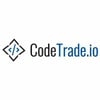Hey there, tech enthusiasts! 👋 Today, we're diving into the fascinating world of Machine Learning 🌟, specifically comparing Supervised Learning and Unsupervised Learning. Let's break it down with some emojis to make it more exciting and digestible!
Supervised Learning 📚👨🏫
What is it? 🤔
Supervised Learning is like learning with a teacher! 👩🏫 You have labeled data, meaning each training example is paired with an output label. Think of it as having the answers at the back of your textbook. 📖
Key Features 🔑
- Labeled Data: You know the correct output.
- Guidance: The model learns from the labeled data.
- Prediction: Used for tasks like classification and regression.
Example 🚗
Imagine you want to teach a self-driving car to recognize stop signs. 🛑 You provide it with thousands of images of stop signs, labeled as "stop sign." The car learns from these examples and eventually recognizes stop signs on its own.
Common Algorithms 📈
- Linear Regression: Predicting continuous values.
- Decision Trees: Splitting data into branches to make decisions.
- Support Vector Machines (SVM): Finding the best boundary between classes.
Unsupervised Learning 🧩🔍
What is it? 🤔
Unsupervised Learning is like exploring a new city without a map! 🗺️ You don't have labeled data, so the model tries to find patterns and structures on its own. It's all about discovery and grouping.
Key Features 🔑
- Unlabeled Data: No correct output provided.
- Exploration: The model looks for hidden patterns.
- Clustering & Association: Used for tasks like clustering and association.
Example 🍎🍊
Let's say you have a basket of fruits 🧺 with no labels. The model groups similar fruits together based on their features, like color, size, and shape. You end up with clusters of apples, oranges, and bananas.
Common Algorithms 📊
- K-Means Clustering: Grouping data into clusters based on similarity.
- Hierarchical Clustering: Creating a tree of clusters.
- Principal Component Analysis (PCA): Reducing the dimensionality of data.
Key Differences 🔄
| Feature | Supervised Learning 📚 | Unsupervised Learning 🧩 |
|---|---|---|
| Data Type | Labeled | Unlabeled |
| Goal | Predict outcomes | Find hidden patterns |
| Examples | Classification, Regression | Clustering, Association |
| Guidance | Teacher/Guided | Explorer/Self-guided |
Which One to Use? 🤷♀️
- Use Supervised Learning when you have labeled data and need to predict an outcome. 📝
- Use Unsupervised Learning when you have unlabeled data and want to uncover hidden patterns. 🔍
Conclusion 🎬
Both Supervised and Unsupervised Learning have their unique strengths and are suited for different tasks. By understanding these differences, you can choose the right approach for your machine learning projects! 🚀
Got any questions or thoughts? Drop them in the comments below! 💬 Let's learn together! 😊





Top comments (0)